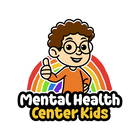|
Key Takeaways:
- Empathy allows kids to understand others and form positive, lasting connections.
- Empathy worksheets allow kids to reflect on how others feel and how to respond with kindness.
- Printable resources like worksheets and handouts make it simple to teach empathy anytime, at home, or in class.
|
Empathy means understanding how someone else feels and caring about their feelings. It’s like imagining yourself in their place so you know why they feel sad, happy, scared, or excited. Empathy worksheets for kids help introduce this idea early, so children can recognize that others have emotions just like they do, and that those feelings matter.
When kids develop empathy, they learn to understand other people’s feelings and communicate better. This helps them build stronger friendships and resolve conflicts.
With empathy worksheets, you can introduce the concept of empathy at home or in class.
The Importance of Teaching Empathy in Early Childhood
When a child recognizes feelings and understands the impact of words or actions, they grow to be more responsible and aware. A child who notices frustration, sadness, or fear in others learns to slow down, think, and respond with kindness.
Children with strong empathy skills share more, include others naturally, and interact with patience. They notice when a friend feels left out. They offer comfort when someone feels upset. These small actions create an inclusive environment where kids feel safe and understood.
A study shows that empathy in early childhood is linked to kind, prosocial behavior and a deeper understanding of others. Empathic kids were more socially aware and socially skilled [*].
When taught at a young age, this skill can help them throughout their life. In one study involving nursing students, researchers found that students who scored higher in empathy also tend to have higher emotional intelligence. This allows them to communicate better, handle emotions more effectively, and form more compassionate patient relationships [*].
How Our Empathy Worksheets Help
Our empathy worksheets introduce kids to the basics of noticing and understanding emotions. Inside the worksheet set, kids work through:
- Reflection prompts that encourage kids to think about other people’s feelings and experiences
- Emotion-matching exercises that help them identify different feelings in themselves and others
- Scenario-based questions that present realistic situations where empathy matters
The worksheets are intentionally designed to fit seamlessly into busy schedules. Whether you have five minutes before dinner or fifteen minutes during a classroom social-emotional learning block, these activities deliver meaningful lessons without overwhelming children or requiring extensive preparation.
Best of all, the worksheets are printable and ready to use immediately. No special materials or training required. Kids can write directly on the worksheets, and every prompt uses simple, kid-friendly language.
Empathy Worksheets for Kids
The 2-page Empathy Worksheets provide activities that teach kids empathy awareness, understanding, and action. They use a two-pronged approach, understanding and practicing, and each worksheet in the bundle supports the other. It includes the following:
Understanding Empathy Worksheet

Understanding gives kids the language and awareness they need. They learn what empathy is, why it matters, and how other people’s feelings might differ from their own.
This worksheet features self-assessment questions that prompt young people to reflect on how empathetic they are. It also helps them think about their typical reactions to other people’s emotions.
This activity builds awareness. Kids start to see the difference between reacting automatically and pausing to think about someone else’s experience. By identifying their own patterns, they get a clearer sense of what empathy looks like in real life.
Practicing Empathy Worksheet

Practicing turns that knowledge into action. Kids get to apply what they’ve learned, which strengthens the skill and helps it stick.
The worksheet presents realistic scenarios involving friends and family. It encourages kids to come up with how they might respond in those situations.
This gives them a safe space to try out different choices, think through what someone might need, and decide how to act with kindness. Practicing in a simple scenario helps them feel more prepared when similar moments happen at home, in school, or with peers.
BONUS: All About Empathy Handout

The All About Empathy handout serves as a quick-reference companion to the previous worksheets. It summarizes the definition and importance of empathy. It also provides ways to understand others’ feelings and how to respond empathetically.
The handout reinforces the worksheet lessons by keeping core concepts of empathy visible. Kids can look at it while they answer the worksheet questions, especially when they’re asked to think about how to respond in different situations. It reinforces the language of empathy and gives them concrete ideas to guide their answers.
It also helps you start conversations around the worksheet prompts. After a child completes a scenario, you can point back to the handout to compare, clarify, or expand on the child’s response.
This one-page reference can be kept on a desk, inside a folder, or on a bulletin board. Use it to reinforce lessons or use it during discussions to review key ideas.
Start Teaching Empathy Today
Empathy can be developed through consistent practice. When kids build empathy early, they communicate better, resolve conflicts, and form deeper connections.
The empathy worksheets and bonus handout give you practical tools that fit into any routine. They help children understand feelings, respond with kindness, and grow into compassionate, thoughtful individuals.
For additional character-building lessons, feel free to explore our full collection of character education worksheets and handouts.
References:
- Leanne C. Findlay, Alberta Girardi, Robert J. Coplan, Links between empathy, social behavior, and social understanding in early childhood, Early Childhood Research Quarterly, Volume 21, Issue 3, 2006, Pages 347-359, ISSN 0885-2006, https://doi.org/10.1016/j.ecresq.2006.07.009.
- Hajibabaee F, A Farahani M, Ameri Z, Salehi T, Hosseini F. The relationship between empathy and emotional intelligence among Iranian nursing students. Int J Med Educ. 2018 Sep 19;9:239-243. doi: 10.5116/ijme.5b83.e2a5. PMID: 30244237; PMCID: PMC6387768.
























































